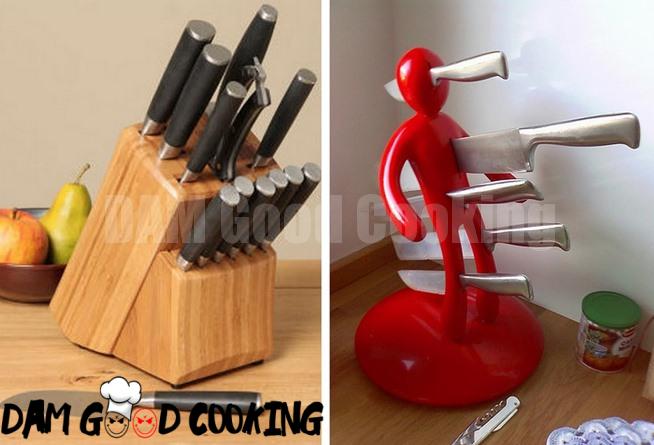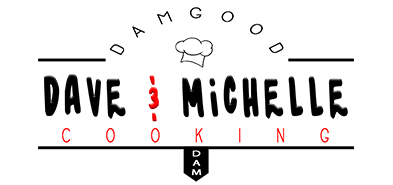After years of making do with a cheap knife, I finally bought a really good 8″ chef’s knife—a Henckels, although I was also eyeing a Global santoku. It quietly but literally changed my life.
I don’t have amazing knife skills, but having a great piece of equipment in my hands really made me enthusiastic about getting in the kitchen. I couldn’t stop making salads and julienning carrots—slicing and dicing had never been so much fun.
While having a sharp chef’s knife can really change how you cook, it needs to be regularly sharpened, whether you use a coffee mug to do so or prefer a more in-depth approach.—I go to a pro once a year and consider it money well spent.
Why Dull Knives Are Dangerous
Cutting with dull knives is dangerous—you have to exert more force to make the knife go through food and you have to make several cuts where a sharp knife only needs to make one or two.
Thus, the chances of having the blade slip and end up somewhere you really don’t want it to end up are a lot higher with dull knives. Plus, dull knives make prepping food harder, and who wants that?

Image via Chronic PointWith good knives, as with your body, your car, and your pet, you need to schedule regular maintenance to make sure this thing you value is around for a long time.

Image by Local Root/Dinner Series
How Can You Tell if Your Knife Is Dull or Sharp?
But how can you tell if your knife is ready for a tune-up? The truth is, a well-made chef’s knife will still do a better job than your average cheapie 8″ knife, to the point where you (okay, I) will keep cutting with it long past its due date.

Image by Cook’s Book/The Daily MealTo check your knife’s status, look around your kitchen for a round food with a slick surface: a tomato, an onion with the peel attached, or a green apple is a good gauge. You should be able to easily cut into the surface of said food by directing the knife with very little pressure.

Image via Chef StepsThe knife should not roll off the slick surface. If you have to use a sawing motion or use the tip of the knife to pierce the flesh, your knife is too dull.
If your knife is truly sharp, it should make slick, clean cuts that allow the tomato to keep the integrity of its shape, as demonstrated in the picture below depicting various ceramic knives and their cutting ability.

Image via Cooking for Engineers
The Ultimate Sharpness Test
The true test that shows if your knife is dull is a surprising one: can it cut paper? Take a regular sheet of white copier paper and hold your knife perpendicular to its edge. If your knife can cleanly slice through that paper with very little effort on your part, it’s still sharp.
If you have to try and force it or use a sawing motion only to leave a ragged cut, you need to introduce your knife to a good waterstone, stat.

Image via Frieda Loves BreadMagazine paper is an even better gauge of your knife’s sharpness because it is so thin and slippery. You can try slicing it the same way you did copier paper. If it passes that test, try rolling up a page from a magazine. If you knife can easily slice into that tube without rolling or bouncing off the surface, congratulations—that sucker is sharp.
Check out this video from knife guru Bob Kramer for a good visual guide as to what knife cuts look like when said knife is really sharp.
Along with the paper-cutting test, Sharpening Supplies says a truly sharp knife will cut effortlessly through the hair on your arms:
“While we recommend caution using this method, it can be very useful. A dull or even moderately sharp knife will just fold over your arm hairs without cutting. A well-sharpened knife will cut almost all of the hairs in one pass. A very sharp knife will cut all the hairs in its path. This level of sharpness can only be attained using the finest abrasive materials.”

Image via Blade Forums
How to Keep Your Knife Sharp
After you sharpen your knife, you’ll want to keep it that way. Always use the proper cutting board when chopping with your knife, never a plate or a countertop—those surfaces will dull your knife within moments. You want to use either a wood board, like maple, or a plastic cutting board that has consistent hardness to help your knife maintain its edge.
Kitchen Knife Guru points out that while bamboo is a popular choice for cutting boards, it tends to have inconsistencies and soft spots on the surface, all of which tear up the edge of your knife. Don’t do your heavy-duty chopping on such a surface.

Maple cutting boards
Image via Thibeault’s TableAlso important: wash knives by hand. Putting them in the dishwasher means that can bounce around off of other utensils and dish ware, throwing off the knives’ balance and blunting the edge. Use a soft sponge and warm water to wipe down your knife after every use.
You’ll also want to store your sharpened knife properly. Don’t bung it in the cutlery drawer where it can bounce off other utensils and get dull in a matter of days, even if it’s in a sheath. Well Done Chef! has a good explanation for your different options and the advantages of each, whether you choose a knife block, magnetic strip, or knife bag.

Image via Useful Spaces
More Knife Sharpening How-Tos from Bob Kramer
If you’re up to the task, you can easily sharpen your knives at home. This usually happens in two stages: honing your knife, which means straightening it out using a steel rod…
And stoning your knife, which utilizes a water stone to bring sharpness back to its cutting edge.
Now, tell me, how sharp is your dull knife now?





